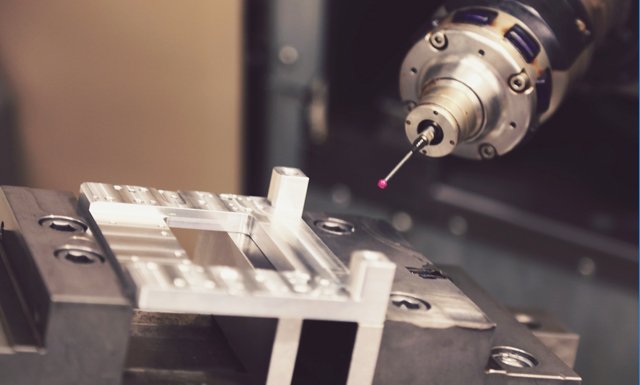CNC machining is a type of manufacturing procedure where computer software that is pre programmed indicates the potential motion of the factory machinery and tools. The procedure is used in controlling a wide array of complex machinery – right from grinders to lathes and routers and mills.
Three dimensional cutting can be effectively accomplished with a CNC machining. And strikingly, it only takes a single set of prompts.
CNC is the short form for computer numerical control. It runs against the limitations of the manual control where the operators have to prompt and actively guide the commands of machining tools through wheels, buttons, and levers. It reminds one of a regular set of computer elements but the software programs used in CNC machining differentiate it from every other type of computation.
Once a CNC system gets active, the required cuts are scheduled and then dictated to the related machinery and tools that carry out specific dimensional tasks. It’s resembles a robot in its performing activity.
In this kind of CNC programming, the code generator inside the numeric system assumes the system to be flawless regardless of its possibility to contain some errors. This is even greater once the CNC machine has to in more than a single direction at a particular point of time. The place of the tool inside the numeric control system is usually determined by a set of inputs that are referred to as the part programs.
Along with the numeric control machine, the programs are generally inputted through the punch card. On the contrary the programs for the CNC machining are constantly updated to the computers through keyboards.
CNC programming is stored inside the computer memory. The efficient and experienced programmers write and edit its codes. That’s why CNC system has much more extensive computational capacity.
The best part about CNC machining is that it is never static. The new prompts can always be added to the existing programs via the revised codes.

cnc machine tools*
cnc machine tools is from https://mdaltd.ca/
In CNC system the machines are usually operated through various numeric control where the software program is designed to access an object. The code language in the CNC machining is commonly known as the G code. This code is written in a way in order to control several behaviours of a machine for instance feed rate, speed, and coordination.
Mainly, CNC machining helps to pre program the position and speed of the machine tool functions and help them to access these through software in a predictive and repetitive cycle. The scope of human involvement is limited in the operation.
Due to such capabilities, the procedure is regularly adopted by the industry owners. This is a common procedure in various manufacturing industry especially in plastic and metal production.
For the beginners a 2D or 3D CAD drawing is mandatory. This is then gets translated into the computer code to help the CNC system to execute the program. Once the program is inputted, the operator opts for a trial in order to ensure that there’s no mistake in the coding presently.
Open and Closed Loop Machining System
Position control is outlined through the open and closed loop system. In case of the open loop system the signal runs in a single way from the controller to the motor. But in case of the close loop system, the controller is able to receive feedback that makes it easy to fix the errors. That’s why a closed loop system is generally used to rectify the issues and irregularities in the position and speed.
In CNC machining, the movement is usually directed across two axes – X and Y. The tool is guided as well as positioned by the servo motors or the stepper that mimics the exact motions as indicated by the G code. If the speed and force are nominal, the procedure can be operated through an open loop control. But for every other case a close loop control is necessary. It ensures consistency, accuracy, and speed of the industrial applications, for instance, the metalwork.
It was back in 1940 when general motor was first introduced in controlling the movement of the existing tools. As technology advanced, the mechanism got enhanced with the analog machines that led to the evolution and rising demand for CNC machining.
The wide majority of contemporary CNC arsenals are absolutely automatic and electronic. Some of the commonly operated CNC processes include hole punching, ultrasonic welding, and laser cutting. The mostly used machines in this CNC system include CNC mills, lathes, plasma cutters, electric discharge machines, water jet cutters, foam cutters, wood routers, embroidery machine, turret puncher, wire bending machine, cylindrical grinder, 3D printer, glass cutter and so on.
The extensive use of CNC machining implies its usability and advantages. These are widely used in large and small and even start up industries.
